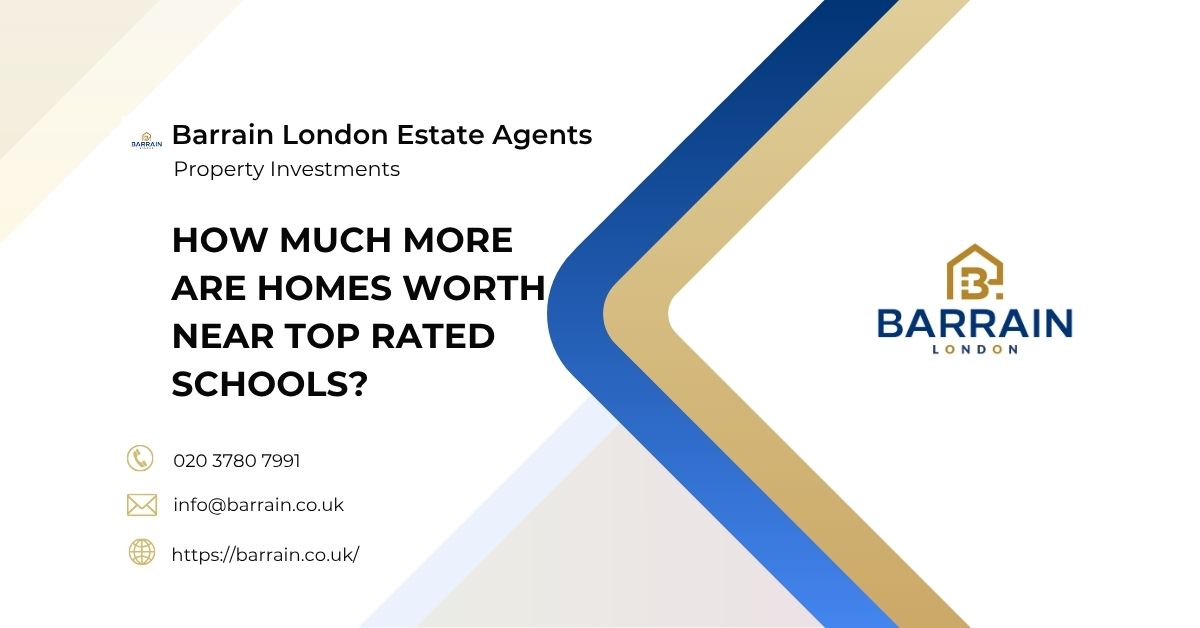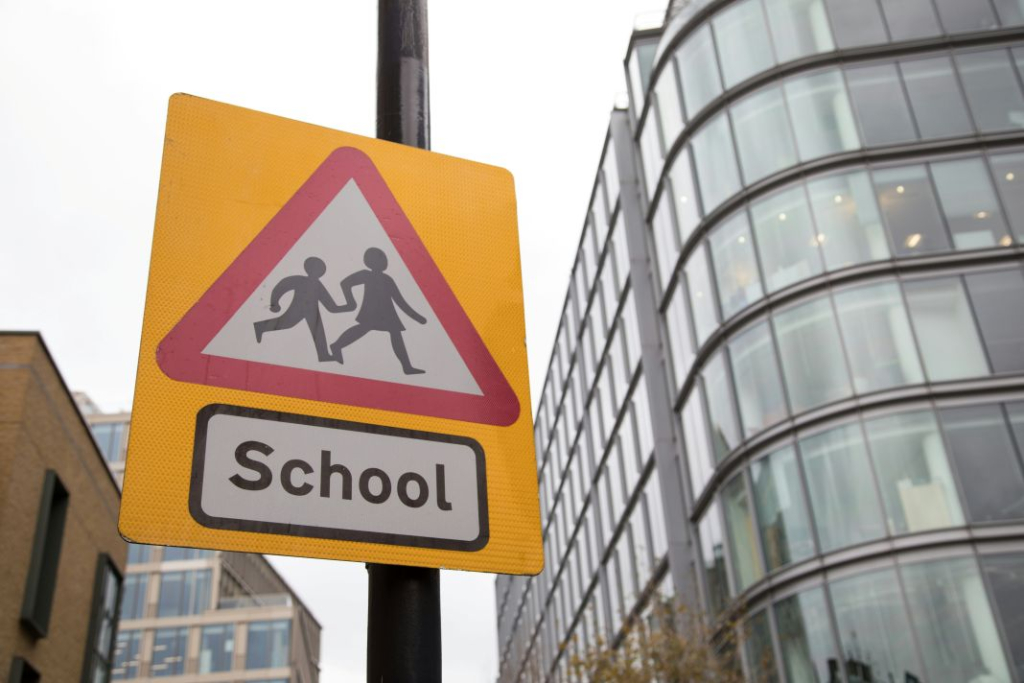How much more do homes near top rated schools cost in the UK?
Homes near top rated schools in the UK often sell for considerably more than those outside sought after catchment zones. Property experts and sales data point to a premium that typically ranges from £20,000 to over £116,000. These differences are shaped by factors like the school’s Ofsted rating, the tightness of its admissions catchment, and regional property market conditions. Demand comes from both families and investors, with some homes selling faster and at a noticeable mark up purely because of their school linked location.
What We Have Covered In This Article?
- Why school proximity matters in property valuation
- What the data says: School premium pricing by region and school type
- Why homes near good schools command higher prices
- How far does the premium reach?
- The hidden downsides of school proximity
- How landlords and investors can benefit from the school premium
- Using tools to judge value: When is the premium worth it?
- Will the school premium always exist?
- What should buyers and landlords do next?
Why school proximity matters in property valuation
Living close to a high performing school means more than just access to education. It often brings steady demand, long term capital growth potential, and stronger resale value. Families like the reassurance of securing a school place, while investors value consistent tenant demand and minimal void periods.
Even small shifts in location can influence value. A home outside the catchment may attract less interest or achieve lower offers. In contrast, a property inside the admissions boundary often appeals more strongly to buyers.
This guide explains what shapes the school premium, how proximity influences pricing, and when paying more could be justified.
What is the average house price increase near top schools?
Research from Hamptons, Santander and the Department for Education shows that being near a well rated school can significantly increase home value. The size of the premium depends on the school, the area and the type of housing stock nearby.
Regional differences
London: School premiums frequently exceed £80,000 in areas like Camden, Barnet and Richmond.
South East and East of England: Grammar schools and high performing academies often raise surrounding property values.
Midlands and North West: Premiums tend to range from £20,000 to £50,000 depending on local factors.
Primary vs secondary impact
Primary schools: Typically create stronger price lifts due to smaller catchments and more intense demand from families.
Secondary schools: Still influential, but their larger catchment zones spread the pricing effect across a wider area.
Homes in the most competitive catchments tend to show stronger price resilience and long term growth. Buyers often ask, how do catchment areas affect house prices in the UK? The answer lies in demand, limited availability, and parental confidence in school performance.
Pro Tip: Catchment boundaries change often. Always check the latest admissions map, not just school distance.
Ehab Barrain
Managing Director at Barrain Estate Agents London
Want to Know the Premium in Your Area?
Get a local breakdown of school-linked property values by postcode.
Why homes near good schools command higher prices
Several reasons explain why school zones increase property value:
Oversubscription: Parents compete for limited places, increasing demand for nearby homes.
Area reputation: Good schools are often located in safer, better serviced neighbourhoods.
Long term thinking: Buyers prefer homes with strong resale prospects linked to education.
Fewer moves: Families often stay longer in areas with trusted schools, reducing housing supply.
This combination of logic and emotion drives many buyers to act quickly and pay more when the right home appears.
How far does the premium reach?
Premiums tend to be highest within 300 to 500 metres of the school but only if the property falls within the current catchment. Walking distance doesn’t guarantee admission.
Homes within one kilometre can still hold value, though the uplift usually tapers off. Properties next to school gates may carry a slight discount due to noise or congestion. Even so, buyers often prioritise access over those drawbacks.
Use Rightmove’s Ofsted overlay or local authority maps to double check real eligibility, not just proximity.
Catchment vs Proximity: What’s the Difference?
Being physically close to a school doesn’t always secure a place. Catchment zones can shift based on applications, sibling priority or school expansions.
A property 400 metres away might be outside the current admissions map. Always review the latest data before assuming access.
Thinking of Buying in a Catchment Zone?
We'll show you which school areas actually deliver on resale and rental demand.
The hidden downsides of school proximity
Not every aspect of living near a good school is positive:
Traffic during pick up and drop off times
Noise from outdoor spaces and daily routines
Limited resale appeal for buyers without children
Flat growth if school demand declines or new schools open nearby
For some, these trade offs reduce the long term appeal even if the home sits in a top zone.
When the School Premium Might Not Be Worth It
In some cases, the price difference isn’t justified. If the school’s rating is slipping or the catchment is shrinking, the premium may not last.
Short term owners, or those unsure about long term plans, may find better value elsewhere.
How landlords and investors can benefit from the school premium
Properties near top rated schools can offer reliable returns:
Tenants tend to renew longer term leases
Demand stays strong even during market slowdowns
Sale prices often outperform comparable areas with average schools
Investors focusing on buy to let near schools should factor in not just rent potential, but also tenant type. School catchments often attract families seeking multi year stability, which supports rental income reliability and lower turnover.
High entry costs mean yield calculations matter. Compare price against potential rent using similar homes on both sides of a school boundary.
Buyer and Landlord Use Cases
First time buyers might opt for a more affordable location with a still improving school.
Growing families often view the premium as worthwhile over the next five to ten years.
Buy to let investors can benefit by targeting school fringes where price is lower but rental interest stays high.
Pro Tip: Lenders may not recognise school-linked premiums, so confirm valuation risk before offering over asking price.
Ehab Barrain
Managing Director at Barrain Estate Agents London
Investing for Yield Near Top Schools?
Discover where the education premium pays off for landlords in the UK.
Using tools to judge value: When is the premium worth it?
Digital and local data can help buyers judge value more clearly:
Ofsted and Rightmove overlays: Match listings to recent inspection results.
Catchment maps: Confirm eligibility, not just distance.
Admission history: Review how far out places were offered in past years.
Local sale prices: Spot whether one street commands a clear uplift over another.
Is it worth paying more to live near a school? For many buyers, yes but only when catchment status is confirmed, school ratings are stable, and other factors like resale value and space meet expectations.
Red Flags That a Premium May Be Overhyped
The school’s latest rating has dropped.
Catchment maps have recently tightened.
The property listing mentions proximity but not eligibility.
Local pricing trends have levelled off or dropped despite school performance.
How Do Lenders View the School Premium?
Mortgage lenders base their valuation on property comparisons, not school ratings. If you offer more than recent sales suggest, the lender may reduce your loan offer.
Speak with your broker about whether the school premium will be reflected in the mortgage valuation before committing.
Will the school premium always exist?
The premium remains strong now but could change due to:
-
Adjustments in how schools are rated by Ofsted.
-
New schools changing local demand.
-
Buyer trends moving toward larger homes or green space over school access.
-
Rising prices pushing families into more affordable areas.
Keep an eye on council data, demographic reports and school performance to protect your investment.
What should buyers and landlords do next?
Make smarter decisions by:
-
Checking updated catchment maps.
-
Comparing homes on both sides of the zone boundary.
-
Asking agents about demand trends.
-
Looking beyond the school to consider parking, space and long term appeal.
3 Step Buyer Action Plan
-
Check admissions boundaries using official council data.
-
Compare similar homes in and out of catchments.
-
Balance school access with other value factors like commuting, space or resale plans.
Want local insights tailored to your postcode?
Request a free School Premium Valuation Guide to see whether the premium pays off in your area.








